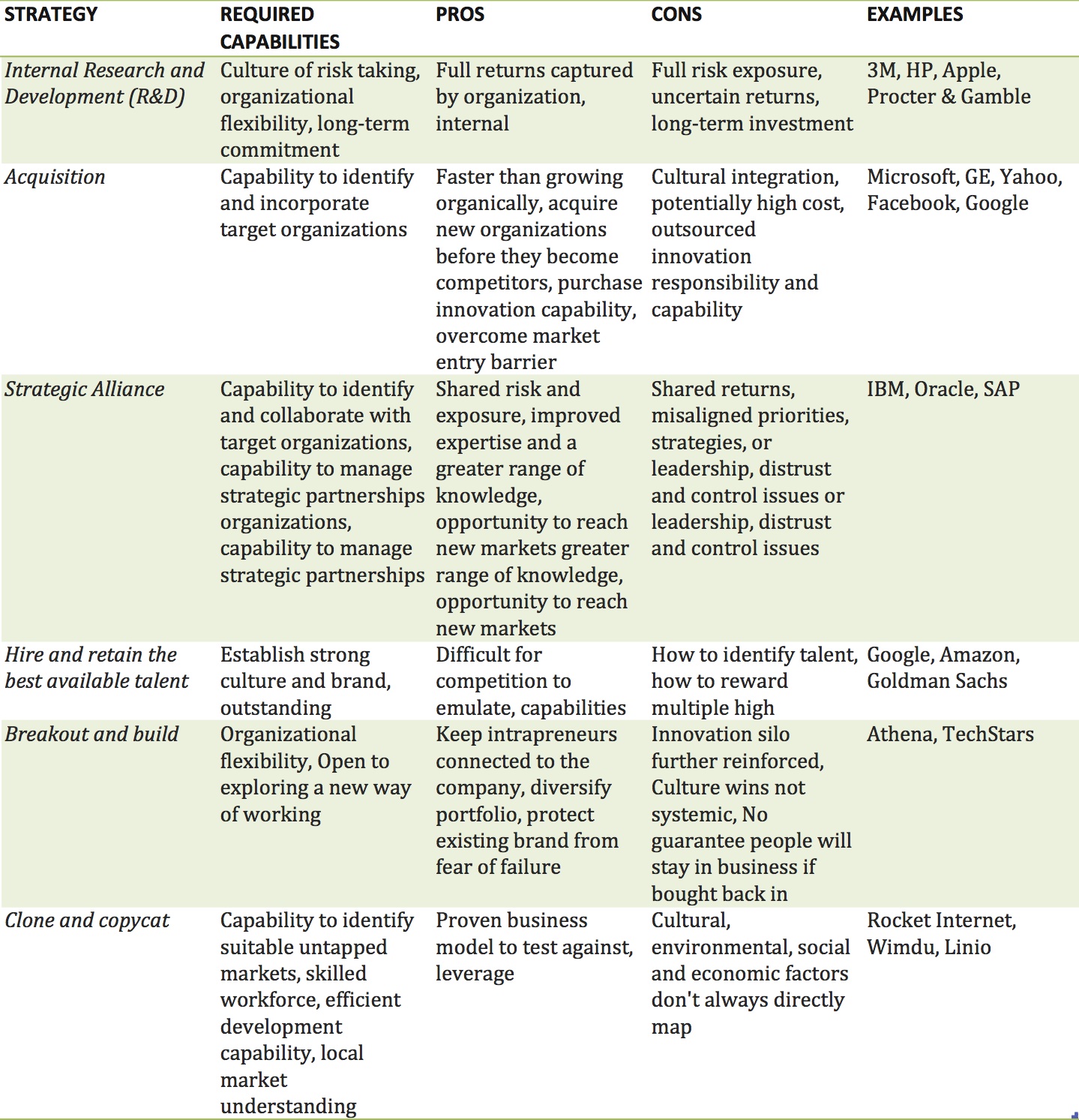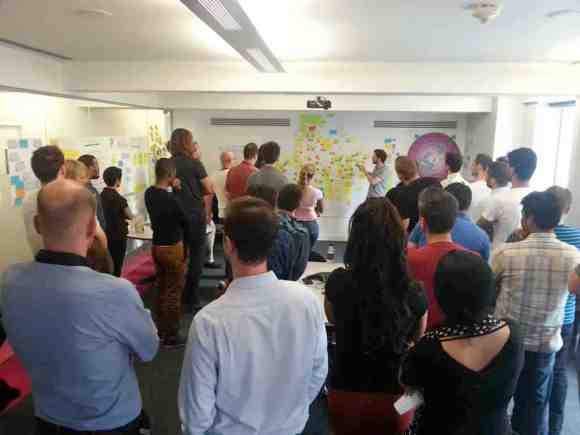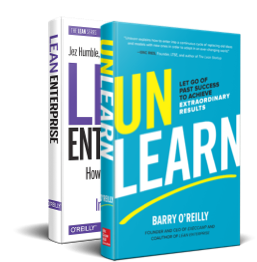I constantly hear how enterprises are poor at innovation, bad at product development and unresponsive to business change. So it begs the question, why do so many organizations get it wrong? And what are the key factors to consider when trying to innovate in large organizations?
Typically the factors constraining innovation are conflicting business goals, competing priorities, localized performance measures, and success criteria. While these have traditionally been the tools of management – to control workforce behavior and output – in highly competitive and quickly evolving business environments they also have had the adverse effects of killing creativity, responsiveness, and ingenuity.
So what are the components needed to unleash innovation in enterprise?
Strong executive mandate
Ultimately, if any initiative is to be successful the CEO and Executive team need to buy into and drive the mandate. They must encourage or even force others with a stake in the game to participate and support the new initiative. The participants involved should be given the mission to explore and provide as many ideas as possible to form the key pillars of future growth for the enterprise.
 Executive sponsorship offers a powerful and immediate way for leadership to clearly articulate policy priorities and advance them. By linking innovation to a growth strategy it ensures it is a targeted, strategic and funded priority for the organization, and provides alignment between business strategy and execution through the action of delivery.
Executive sponsorship offers a powerful and immediate way for leadership to clearly articulate policy priorities and advance them. By linking innovation to a growth strategy it ensures it is a targeted, strategic and funded priority for the organization, and provides alignment between business strategy and execution through the action of delivery.
While I applaud the dissenters and nonconformists who attempt to start initiatives on their own, I find in practice that executive leadership support and sponsorship is required for systemic and lasting success.
Flexibility in innovation strategy
As with any business decision, organizations should begin by honestly assessing their capabilities. Organizations must access their culture, evaluate leadership support and people’s willingness to cooperate with various innovation strategies. For example, will employees behave territorially and discount ideas because they were generated by another department, or externally?
By choosing preferred focus areas for innovation, organizations can define an overall innovation strategy that is suitable for achieving the organization’s goals that are best aligned to its key capabilities. Organizations seeking to cultivate a culture of innovation should consider the merits and drawbacks of each of the options outlined below when making a decision.
Organizational Innovation Strategies

When deciding on an innovation strategy I encourage leadership teams to base the decision on the answers to these key questions:
- What is the intended outcome they want to achieve from pursuing the selected strategy?
- Which strategy is best aligned to their objectives, capabilities, people and values?
- Where do they want to be on the innovation curve — disruptor, early adopter, follower and laggard?
- Finally, they should identify specific obsoletes and constraints that prevent them from being entrepreneurial in their pursuit of the strategy and find ways to remove or bypass them.
Consider Complementarity Strategies
An organization that chooses to pursue more than one of the six strategies simultaneously should consider strategies that complement each other, such as R&D and Strategic Alliances.
Procter & Gamble (P&G) launched a “Connect and Develop” program to systematically engage with partners outside the boundaries of the company to source new-product ideas. In 2012, its Head of Technology announced that P&G had tripled its percentage of ideas that made it successfully to market as new products.
Use constraining, not strangling control structures
Tight controls strangle innovation — as does lengthy planning, budgeting and review activities such as business case novels or annual budgeting cycles. Organizations should expect deviations from the plan when exploring new domains. Opportunities emerge from unexpected places hence we need structures and control processes that are dynamic and respond to change based on new learning. Instead of strangling teams with KPIs, release milestones and fixed scope requirements, set shorter iteration cycle constraints on teams regarding time, budget and measurable target conditions to achieve based on feedback with customers/users/stakeholders. Then review the outcomes achieved and make decisions for further investment or closure based on evidence from performing the work, not writing the plan.
Open up the organizational network for collaboration
Businesses must also make organizational changes if they are to exploit innovation networks to the full. In particular, this means ensuring efficient collaboration and information sharing throughout the organization. Mechanisms for this include collaborative ideation workshops, organization-wide showcases by initiatives across the portfolio and cross-functional working days to meet and build relationships with other people in the organization.
Leadership must seek opportunities to increase the cross-fertilization of ideas between as many business units as possible. When starting new initiatives, this is typically achieved by creating small cross-functional teams composed of representatives from all areas of the organization including development, marketing, finance and legal to explore the problem domain at speed.
 Encourage customers/users to participate and co-create in innovation initiatives by regularly involving them throughout the process. Seek regular feedback on what you are doing with the people you are designing for. Close the feedback loop with them and use the learning to move forward and improve.
Encourage customers/users to participate and co-create in innovation initiatives by regularly involving them throughout the process. Seek regular feedback on what you are doing with the people you are designing for. Close the feedback loop with them and use the learning to move forward and improve.
Tap into internal sources of ideas so that every part of the organization is regarded as involved in the innovation process. This often requires a shift in corporate culture – removing the ‘not invented here’ mentality to ensure that intrapreneurs and other leaders are prepared to open up to external sources of innovation. Be prepared to tell people within the business to consider the possibility that another part of the organization might be best-placed to exploit some of their ideas – together or maybe even without them.
Finally, innovation networks depend on the recognition that innovation doesn’t only come from the research laboratory, but also from other sources – both internal and external. To remain innovative in a world of distributed knowledge, many organizations are recognizing that they must open their innovation process to combine internal with external R&D. Many businesses are starting to open up to alternative structure models to bring thought leaders of independent tribes together. In doing so they are set to achieve greater performance than would be possible alone, such as complementing organizations with technology breakthrough capability with organizations specializing in design-driven competencies (and visa-versa). Examples include IDEO, ThoughtWorks, and others collaborating together on new pieces of work.
Find and empower talent doing the work
Culture comes from the top. It is up to leadership to define and enact the behaviors that make people feel empowered to innovate and experiment. Pushing down authority is an enabler and empowering teams to come up with their own solutions to solve business problems can give rise to wider innovations.
If an organization only relies on recruitment, acquisition and strategic alliances to access creative talent, what does that say about its ability to generate and retain homegrown innovators? If you want your company to become a market leader, reflect on that question. The most effective way to achieve continuous innovation over the long term is to cultivate talented people and allow them to experiment, grow and learn on the job.
Underestimating the importance of growing the internal capability of your people cannot be understated. There is an onus on organizations to build a culture of learning that supports the development of their people and helps them get to the new vision of how the organization will operate.
The talent war is only getting tougher. There are limited people available in the world with experience in doing highly specialized work and the competition for their services is fierce. Hiring can only take you so far – you also need to grow people on the job.
Following this, you must empower and amplify trust in those performing the work to get on with it. Providing people with autonomy and accountability makes them intrinsically motivated to achieve the desired outcomes.
Make a long term commitment to investment
Change takes time. The culture shift needed in mindset, strategy and organizational structure is hugely challenging for most people. Fears of lost position, status or knowledge built up through existing practices and politics are often the biggest hurdles. The bigger the change, the harder the pushback.
Very few initiatives get it right the first time and people will stumble and fall along the way. However it is not the failure that we should celebrate, but the learning that ensues.
Conclusion
There is no single answer to solve every enterprises innovation challenge however I always remind leaders to consider the following points;
- Ensure innovation has a strong executive mandate across your organization. If leaders are not willing to support it, success can only be incremental at best.
- Understand your own organizations strengths and weakness, then be flexible in the innovation strategy you choose, then adapt it as you see what is working and what is not.
- Don’t kill innovation with traditional operational KPIs, such as ROI, before they’ve ever had a chance to get traction. Use constraining, not strangling controls by setting short iteration cycles and reviewing the outcomes achieved before making further investment decisions.
- Open up the organization network for collaboration by making it easy for people to meet, share what they working on and the information their learning. Encourage people to build up, not break others ideas.
- Build a culture of intrapreneurship in your business. Find and empower people doing the work to make them as successful as they can be to further drive change in the business.
- Make a long term commitment to invest as change takes time and needs support, funding, and protection to build momentum over time.
Winning organizations are continually experimenting; testing theories to learn what works and what doesn’t. Not every innovation attempt will be successful, but those that do pass the test can have a massive impact on the organization’s future fortunes. Make your enterprise the place where that happens – without permission!
Don’t want to miss a post? Sign up for my newsletter!

